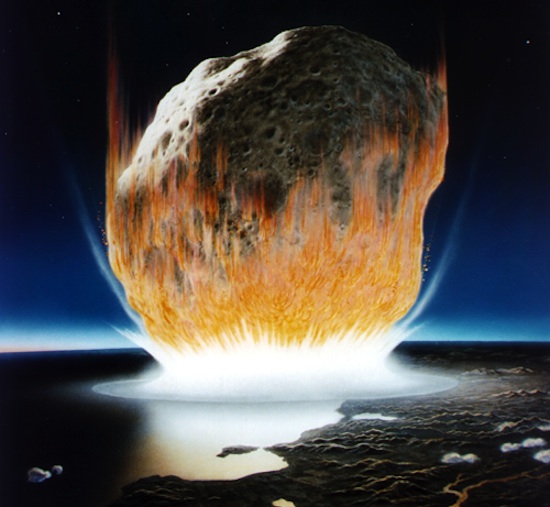Study Says It’s Possible the Earth May Have Spread Life to Other Planets
Scientists are spending a lot of time looking for worlds on which life may flourish — worlds like our own, or at least sufficiently like our own. How life would get there is a bit of an open question, but one possibility is a “panspermia” scenario where life is propagated between worlds by asteroids and comets. But a study on the subject of panspermia takes a look at a radical suggestion: That Earth has spread life to other, possibly life sustaining bodies.
Kyoto Sangyo University’s Tetsuya Hara wanted to see if it was possible for bits of our planet to wind up on worlds that we currently think could harbor life. Hara’s logic, while simple, is intriguing: Since we know of only one planet in the universe which can support life, it makes sense to investigate the possibility of life leaving this planet.
Hara’s research team looked at the Chicxulub impact — one of the largest known meteorite impacts in Earth’s history. In addition to being blamed for wiping out the dinosaurs when it hit 65 million years ago, Chicxulub also knocked an enormous amount of material into the air and possibly off the Earth. Their research sought to determine how many of these tiny pieces of home may have made their way through space and landed in places possibly hospitable for life.
According to the study, about 500 Earth rocks could have fallen on Saturn’s moon Enceladus, and 300 million on Jupter’s moon Europa. Both of these are notable in our solar system as being the only bodies beside Earth that have oceans of water. Looking at other bodies in the Solar System like Ceres, Eris, the Moon and Mars, Hara’s research suggests that our neighborhood of planets and moons is positively filthy with Earth-bits.
Looking beyond our familiar eight planets, Hara figures it is even possible that 1,000 Earth rocks could have drifted as far as Gliese 581 — a red dwarf star some 20 lightyears from Earth and possibly home to Earth-like planets. What’s more, Hara calculates that these bits of Earth could have made it there in as little as a million years.
Of course, Hara’s calculations only look at the likelihood that rocks — and 1 cm rocks at that — made it to these presumably life-friendly locales. The team did not look into how life could have propagated away from home, or whether any organic life could have survived the trip. In space, tiny critters would be subjected to a horrific vacuum and intense radiation. Previous research, however, has suggested that it is possible, and that likelihood would be increased if the organisms were buried in rock.
Likelihood is a far cry from certainty, but it’s a fascinating bit of research. Perhaps if we ever do find life off our home world, it may be more familiar than we’d think.
(via New Scientist, image via Wikimedia)
- Astronomers may have found the most crowded exoplanet system
- Kepler exoplanet-hunting mission extended
- If there’s life in Lake Vostok, it might look like life on other planets
- NASA may have found life on Mars years ago — maybe
Have a tip we should know? tips@themarysue.com
